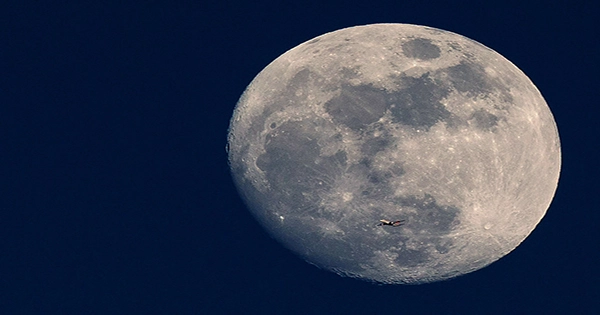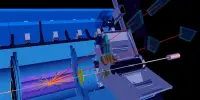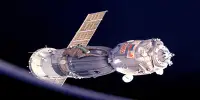Phosphorus, the rarest element crucial to life as we know it, has been identified for the first time in an ocean beyond Earth, spat out by Saturn’s ice moon Enceladus.
The crucial element helps make soil productive on Earth, and researchers believe phosphorus concentrations in Enceladus’ secret seas are at least 100 times higher than in Earth’s oceans. The new discoveries also suggest that the oceans of other frozen worlds, such as Jupiter’s fourth-largest moon Europa and Saturn’s largest moon Titan, may be equally phosphorus-rich.
Phosphates, or phosphorus-containing chemicals, are critical components of life on Earth, including DNA, RNA, and cell membranes. Carbon, hydrogen, nitrogen, oxygen, phosphorus, and sulfur are the six elements essential for life, yet phosphorus “is by far the least common in the universe,” according to Frank Postberg, a planetary scientist at the Free University of Berlin.
Phosphorus was the only one of these six fundamental building ingredients that had yet to be discovered in oceans beyond Earth. However, beginning in 2004, the Cassini spacecraft drifted into dust from Saturn’s second outermost ring, the E ring, which is made up of ice grains expelled from Enceladus. Scientists investigating ice grains measured by Cassini’s Cosmic Dust Analyzer have discovered the elusive element, according to a recent study published in the journal Nature.

Enceladus, Saturn’s sixth biggest moon, is just approximately 314 miles across, making it small enough to fit inside the borders of Arizona. Scientists expected Enceladus to be a solid ice ball when the Cassini spacecraft first arrived at Saturn in 2004. They discovered plumes of water vapor and frozen particles erupting from geysers on the moon’s surface the following year, suggesting the existence of a worldwide ocean between the moon’s icy shell and its rocky core.
Postberg, the study’s primary author, and his colleagues previously discovered that Enceladus’ ocean may contain complex organic molecules.
This makes Enceladus “the most promising place, the lowest-hanging fruit, in our solar system to search for extraterrestrial life,” according to Carolyn Porco, a planetary scientist and Cassini imaging team leader who was not involved in the current study.
Searching for hidden phosphorous: To date, no one has identified phosphorous in the ice of Enceladus or any such worlds, raising the question of whether these worlds are actually livable. “People were really doubting whether or not phosphorus could be the bottleneck for the possibility of life emerging,” Postberg adds.
Previous simulations of Enceladus and other frozen ocean worlds disagreed on whether these hidden seas contained considerable amounts of phosphates. “Phosphates don’t like to dissolve in water, so it’s in principle harder to find in oceans,” Postberg explains.
Early studies showed that phosphates could be trapped within these worlds’ rocky cores. However, more recent research suggests that phosphates may also be prevalent in the oceans.
Between 2004 and 2008, Cassini studied 345 ice grains from Saturn’s E-ring and discovered nine containing phosphates.
“The most surprising thing was how clear and unmistakable the phosphate signatures are in the data,” adds Postberg. “It took years of analyzing a lot of data, but from my perspective, this is really a bulletproof detection.”
“It’s surprising that Postberg and others were able to sort through the grains and pull out the phosphorus signal so well,” says Chris McKay, an astrobiologist at NASA’s Ames Research Center in Moffett Field, California, who was not involved in this study. “Very impressive detective work.”
Recent research reported the identification of phosphine, a phosphorus-hydrogen molecule, in Venus’ clouds. “There is no controversy here—phosphate and phosphine are different,” says Gabriel Tobie, a planetary scientist at the French National Center for Scientific Research who was not involved in the new study.
Phosphates, which are phosphorus and oxygen compounds, “do not require any exotic reactions on Enceladus, whereas phosphine on Venus is much more difficult to explain,” Tobie explains.
Probing the depths: The scientists predicted that phosphorus concentrations in Enceladus’ waters were 100 to 1,000 times higher than in Earth’s oceans based on phosphate levels detected across the icy grains. They suspected this was conceivable since Enceladus’ ocean is high in dissolved carbonates, similar to soda. “This soda ocean can dissolve the phosphates in Enceladus’s rocks,” adds Postberg.
Furthermore, the seas of frozen ocean planets in the outer solar system, such as Pluto and Neptune’s largest moon Triton, should be rich in carbonates, implying that they may dissolve phosphates from rock, according to Postberg. In addition, NASA’s Europa Clipper mission, which is set to launch in 2024, may identify phosphates in icy grains ejected from the moon.
Though the discovery of phosphates on Enceladus suggests exciting possibilities, the modest amount of ice grains studied by the researchers leave certain questions unsolved. Tobie says that more research is needed to know whether these phosphates are prevalent everywhere in Enceladus’ water or only in select places.
“The next step is to return to Enceladus and search for organic biomarkers using appropriate tools,” McKay says.
















